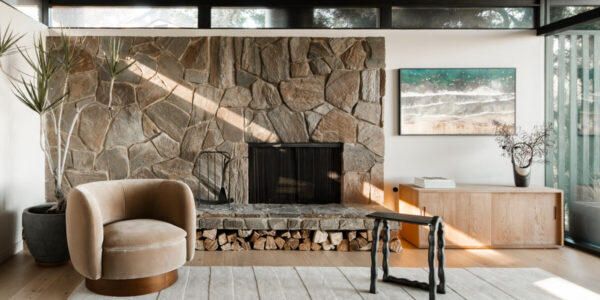
Side-yard makeover
Long and narrow side yards are often overlooked as valuable garden real estate. It’s easy to treat them simply as pass-throughs between the front and backyards. But with a little planning and ingenuity, you can turn your side yard into an inviting garden destination.
When Samantha Dardick Mier and Joel Mier bought their first house in San Jose, they wanted an easily accessible space for backyard entertaining. But the main way to the garden was through doors that opened from the house into a side yard. The couple decided to transform both that side yard and the other one to meet their outdoor-living needs.
Side yard 1: journey through flowers
Before the makeover, one of the 14- by 35-foot yards contained only a straight cement driveway and a narrow planting strip along the fence. The Miers asked friends to help them jackhammer and remove the paving. Then Samantha ― who grew up on an organic subsistence farm but didn’t have any ornamental-gardening experience ― gathered ideas from neighboring gardens, researched landscape design, and sketched a plan.
A meandering 30-inch-wide path forms a major element of this side yard. Because it’s gently curved, the path makes the narrow space feel broader, and forces people to slow down to appreciate the blooming borders beside it. Made of aggregate concrete and installed by a contractor, it also provides a stable surface where the Miers’ kids ― Amanda, 8, and Cole, 5 ― can ride their scooters.
To create a mood of abundance, Samantha packed the beds next to the path with blooming plants, including daylilies, lamb’s ears, penstemon, society garlic, and hot pink verbena. Several, including Shasta daisies from Joel’s grandfather and Peruvian lilies (Alstroemeria) from a friend, were gifts. “I wanted it to feel like you were wandering though a plethora of color,” she says. One alluring bed also helps draw attention downward instead of up toward a neighbor’s imposing two-story house.
Samantha rarely purchases plants ― she regularly divides what she has, and gives away many that she doesn’t have space for. She also lets bloomers like alyssum, coreopsis, and lobelia reseed freely. “That way you don’t always have to buy new plants,” she says.
The plants, layered from shortest in front to tallest in back, are watered by an automatic drip-irrigation system and fed with springtime applications of organic compost and chicken manure.
A spacious patio, which allows plenty of room for family meals and entertaining, is the ideal spot from which to view the entire side garden. At the front end, a Dutch door framed with a sturdy arbor is designed as both a focal point and an entry portal; at the back end, beyond the beds, a crape myrtle marks a colorful transition to the backyard. The tree bears rose-pink blooms in summer.
Side yard 2: room for work and play
In the family’s other side yard, the couple removed a hulking tree that shaded an otherwise sunny space. Then Samantha built five raised beds, adding roughly 60 square feet for growing herbs and vegetables. There’s enough room left over for a small expanse of lawn for the kids’ play structures (visible from the kitchen window so Samantha can keep an eye on them). This yard has served as a place for Amanda and Cole to garden too; in fact, they’ve used it as a science lab of sorts to learn about compost, nutrients, and beneficial insects.
The Miers’ revamped side yards provide all the outdoor living features they wanted. “Our family enjoys the garden every day in nice weather,” Samantha says.
Tips for designing a side yard
Gather ideas
Watch for design ideas and for plants that do particularly well in your area. “Walk around and see what you like, then ask people about their plants,” Samantha Dardick Mier advises. “Don’t be shy.”
Create curves
A winding path, rather than a straight one, makes a narrow space feel less like a bowling alley. The Miers also used bands of brick to visually break up the path.
Limit your palette
Too many colors can make a small space look messy. The first year Samantha gardened, she put all the plants she bought and got as gifts into the beds. “It was too wild,” she says. “Now I try to stick with a color scheme of purple, pink, yellow, and a little white.”
Stay on top of maintenance
Overgrown plants can quickly dominate a compact area. Samantha spends about an hour per week weeding, deadheading, and cutting back any plant that has grown out of bounds. She regularly trims back any plants that wander too far into the path.
Info: Jon Buerk, J. Buerk Landscape/Maintenance, San Jose (408/348-6019)
